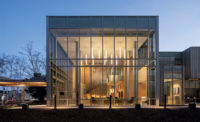WRNS Studio’s Mixed-Use Brickline Feels Right at Home in San Mateo

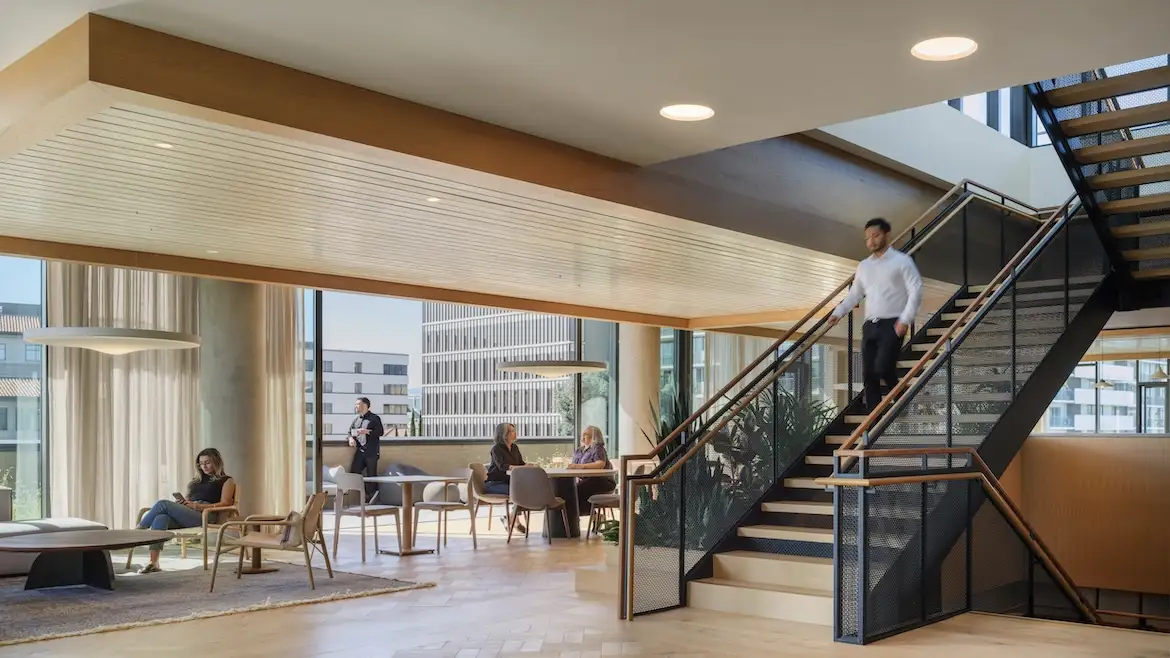
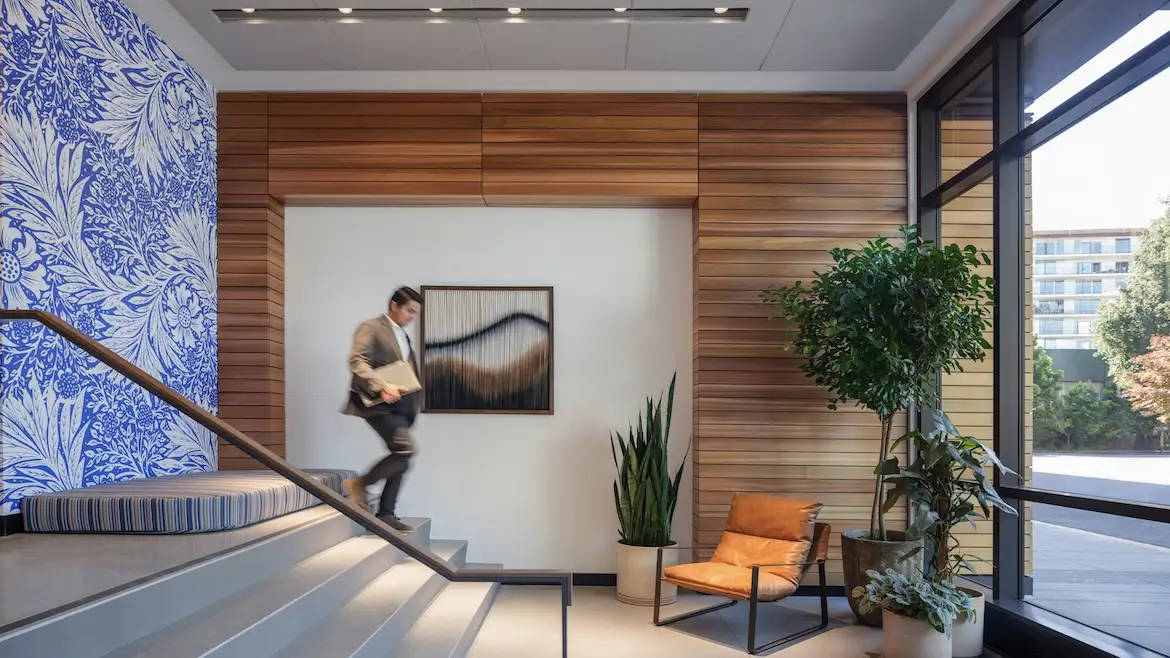
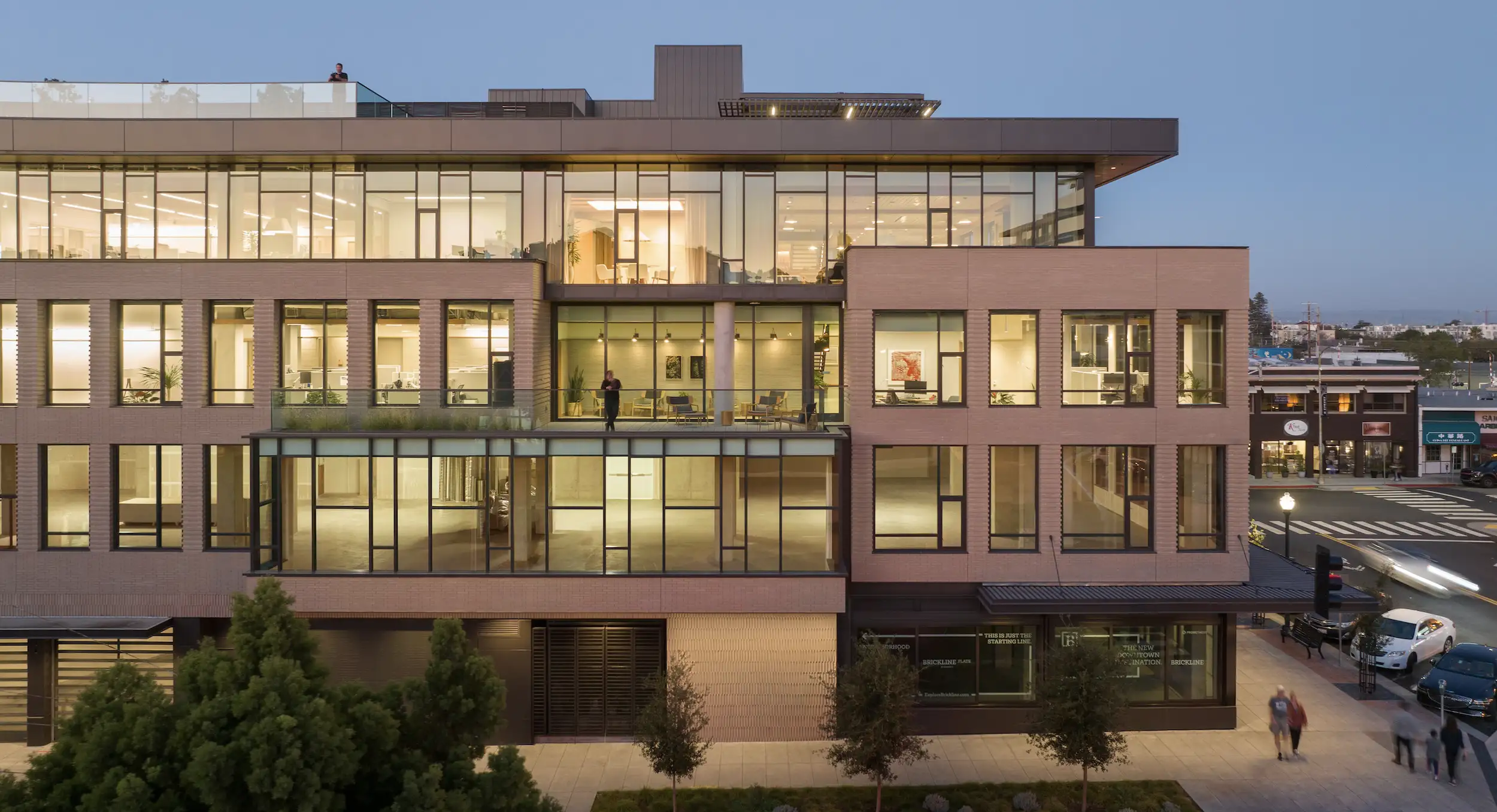
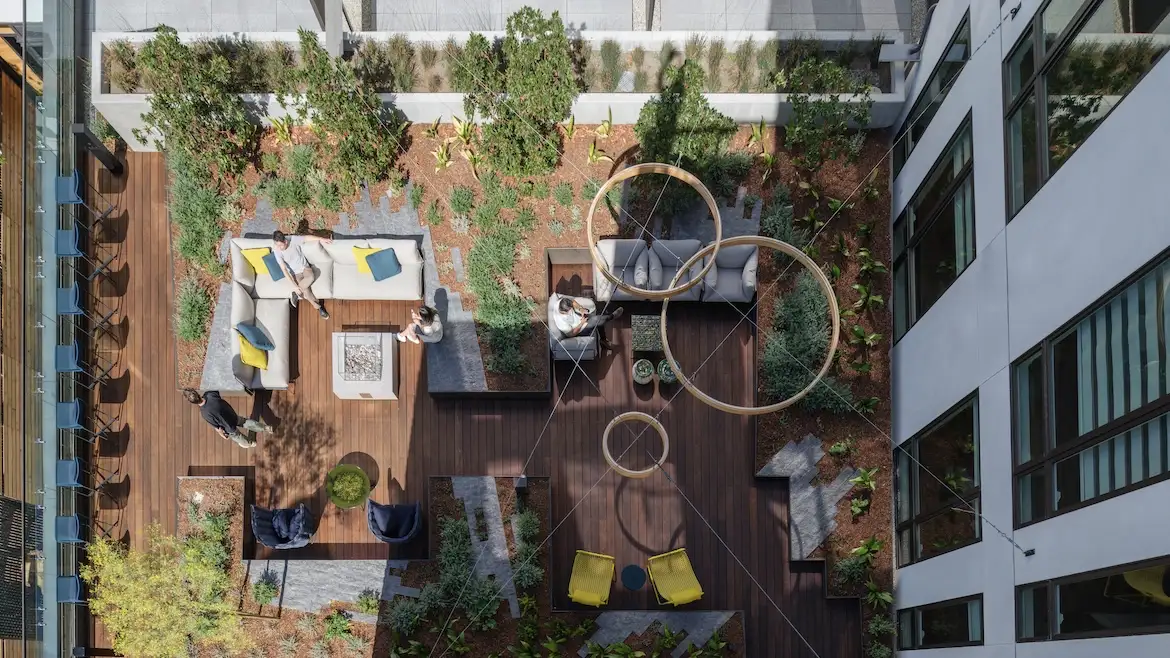





Architects & Firms
Visit almost any growing city in the country and a monoculture of residential architecture will likely become apparent—a proliferation of five-over-one apartment buildings, meant to meet a growing demand for commuter-friendly units amid nationwide housing shortages. When San Francisco–based WRNS Studio was approached by longtime client Prometheus Real Estate Group, the firm saw an opportunity to push back against this trend: the apartment developer, who had first met WRNS through the firm’s pro-bono work with the Trust for Public Land, wanted the studio to design a mixed-use housing and commercial project in San Mateo, California, just steps from a regional transit hub in the city’s walkable, vital downtown. The site, formerly occupied by a grocery store and surface parking lot, was ripe for development for young professionals seeking amenity-rich urban housing. It would also be the new headquarters for Prometheus, which wanted to convey its nearly 60-year history in the Bay Area with bespoke offices.
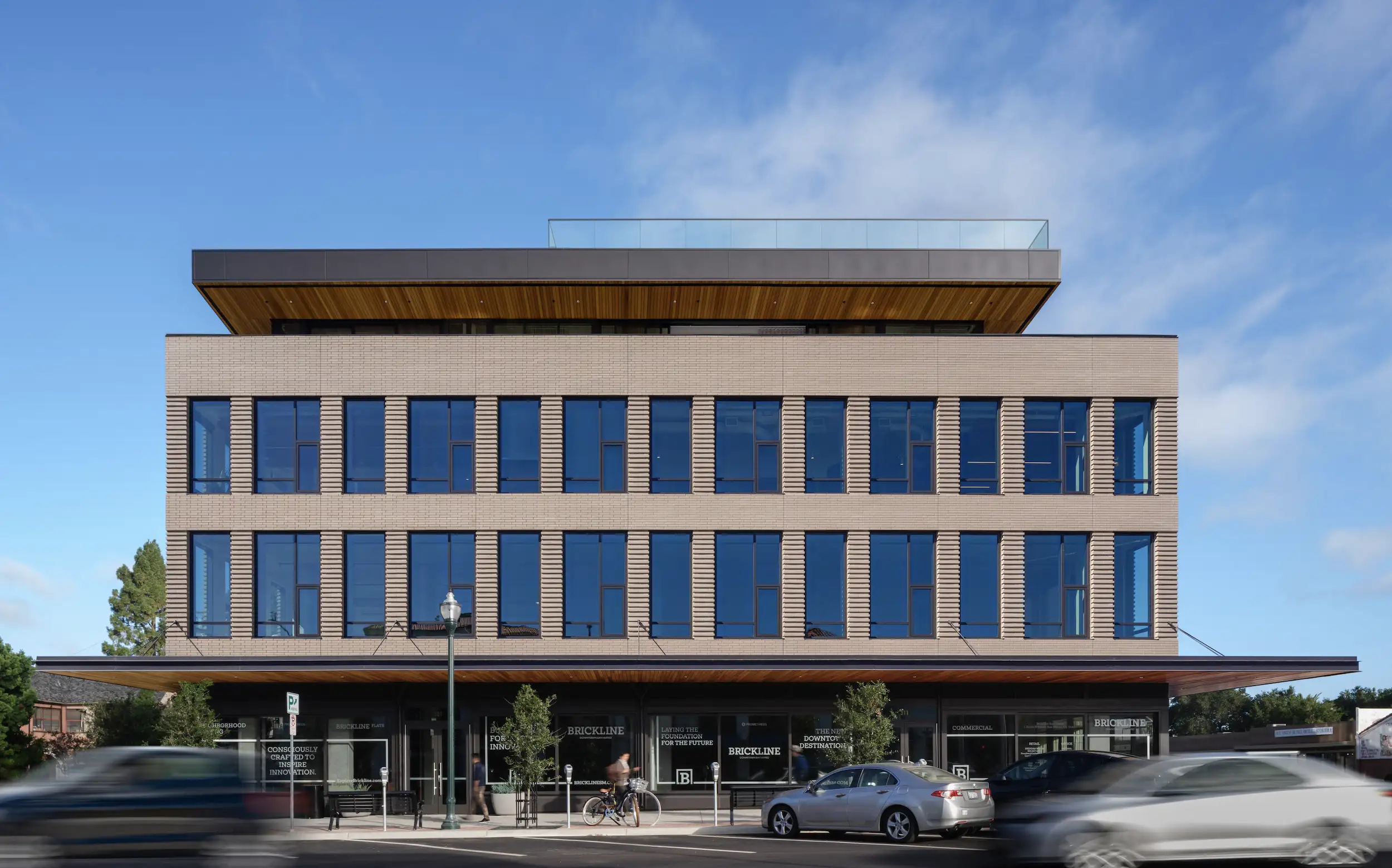
Brickline spans a whole city block in downtown San Mateo. Photo © Jason O'Rear
As the WRNS team and their clients toured the city’s streets during initial project meetings, “We looked at how to connect from a material perspective, but also on the massing side because San Mateo has a certain scale, and there’s a 55-foot height limit to this site,” says partner Brian Milman, who led the project for WRNS along with founding partner Bryan Shiles.
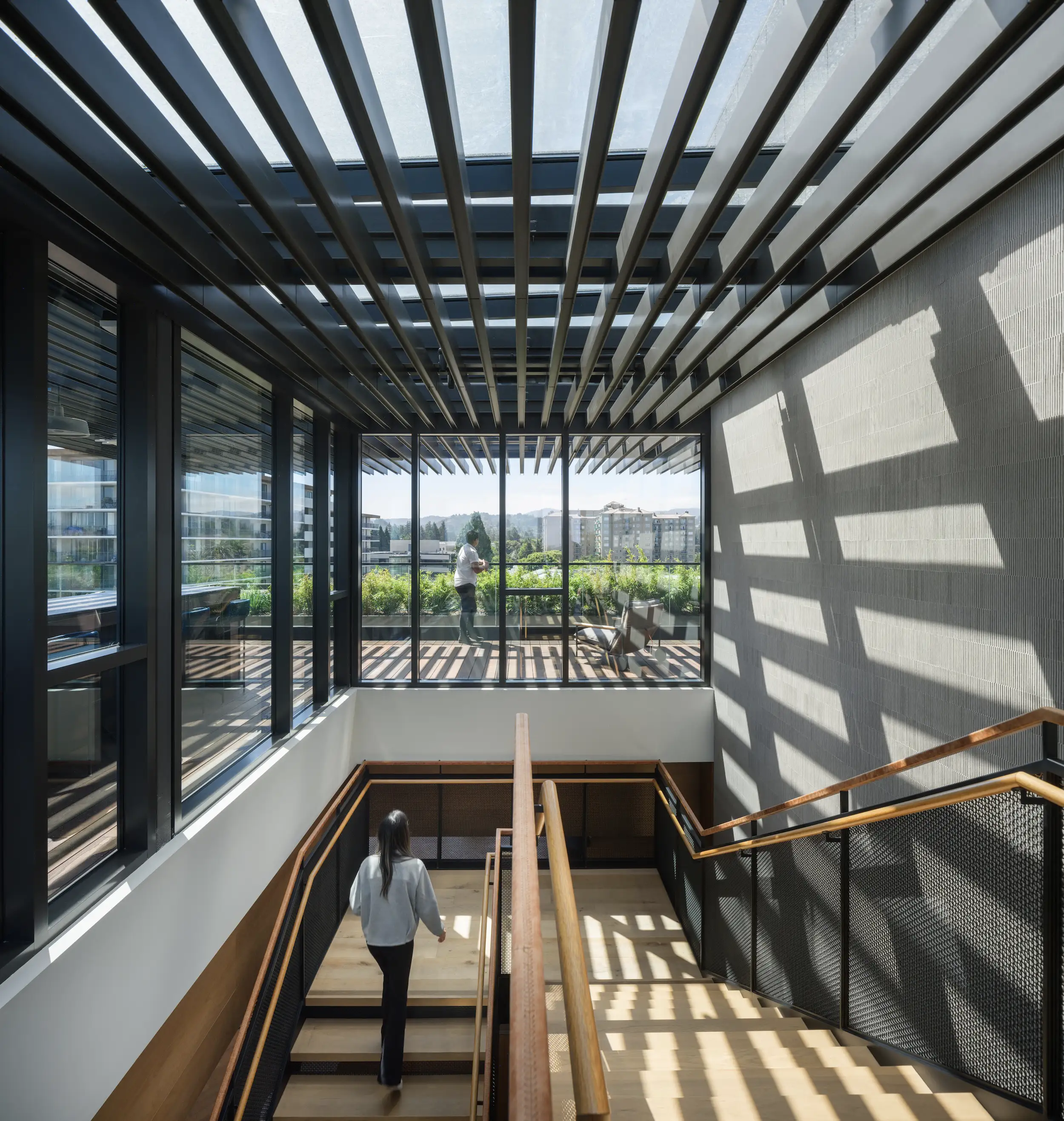
Stair leading to rooftop deck. Photo © Jason O'Rear
The finished building, spanning an entire block, respects the city’s pedestrian experience with a headhouse form on its North B Street–facing side, which gradually tapers and cedes to a widened sidewalk and end-of-block plaza sheltered by a pronounced roof overhang. The program’s elements are broken down by material cues: brick, wood, and ribbed metal facade panels mark five stories of studio and one-bedroom apartments, which residents enter from a tree-lined street. Referencing brick buildings nearby, corbeled brick and punched windows distinguish the four-story office volume, which contains Prometheus headquarters as well as spec office space, accessible from the busier side. At street level, the Prometheus office entrance is flanked by wood-framed windows and fluted terra-cotta panels. To connect that aspect of the building to the area’s history, the firm looked to the land’s original inhabitants, the Ohlone people of Northern California, for inspiration. “The cast terra-cotta was essentially an abstraction of the patterns that some of the Ohlone tribes had used when they built their grass and reed houses,” explains Milman.
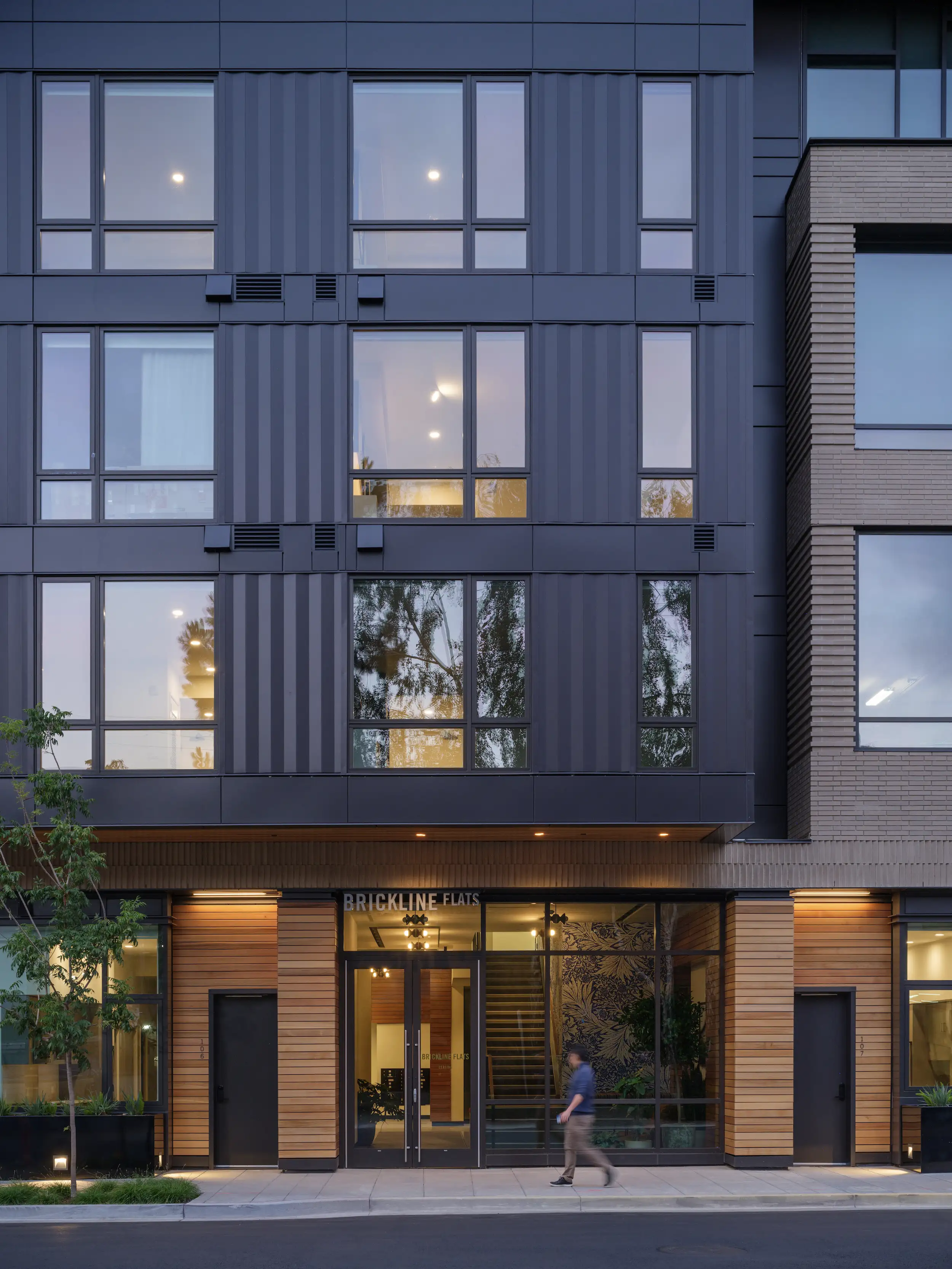
1
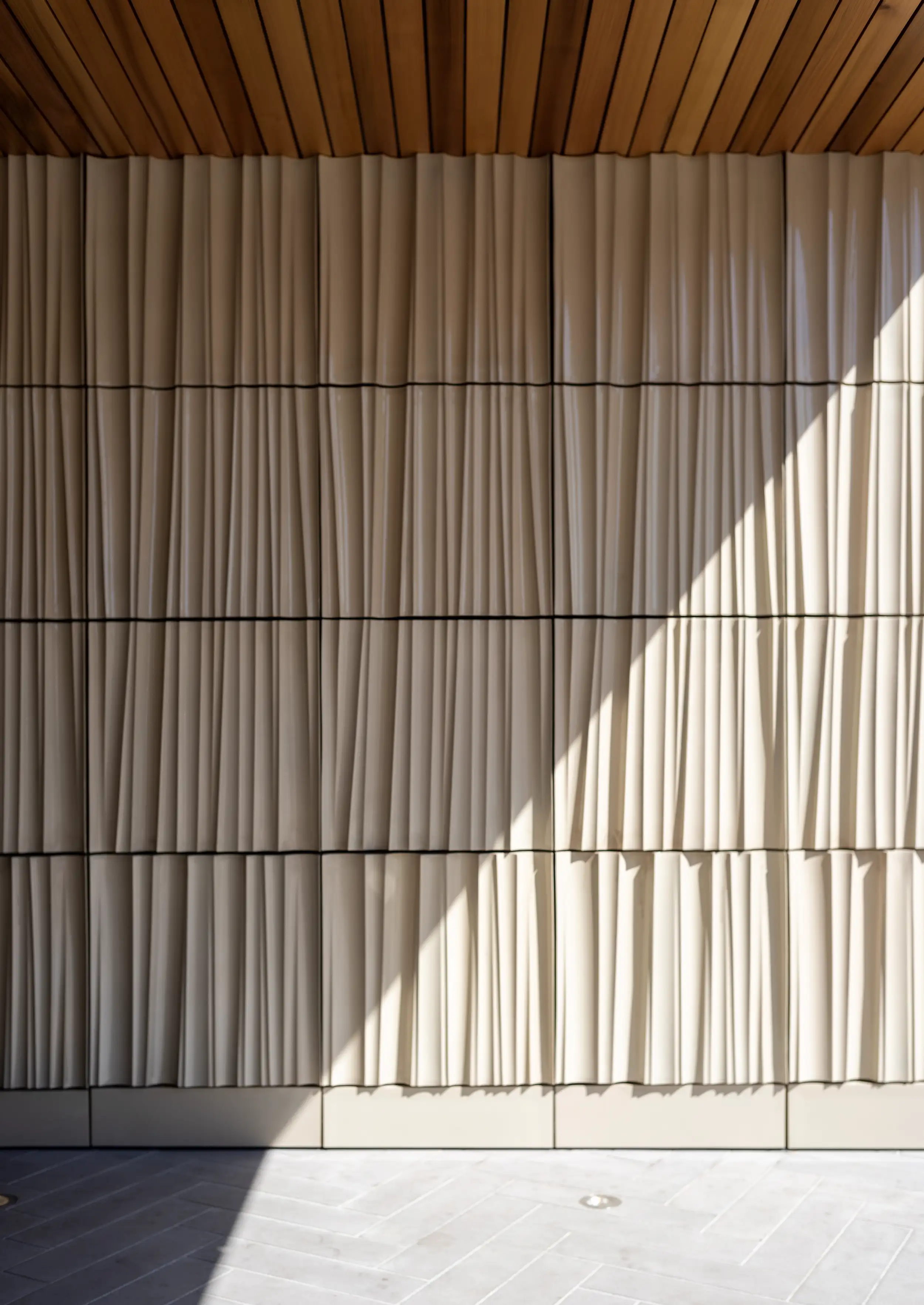
2
Entrance to Brickline Flats, the residential component of the building (1); terra-cotta facade detail (2). Photos © Jason O'Rear (1), Celso Rojas (2).
These material considerations continue inside the Prometheus offices, also designed by WRNS, where textiles, wood accents, and metals evoke coastal California. “Sometimes we refer to it as the ‘summer Armani suit,’” jokes Milman. “Everything feels very light and refreshing, but most importantly timeless, because they saw themselves as fitting into the fabric for a very, very long time.”
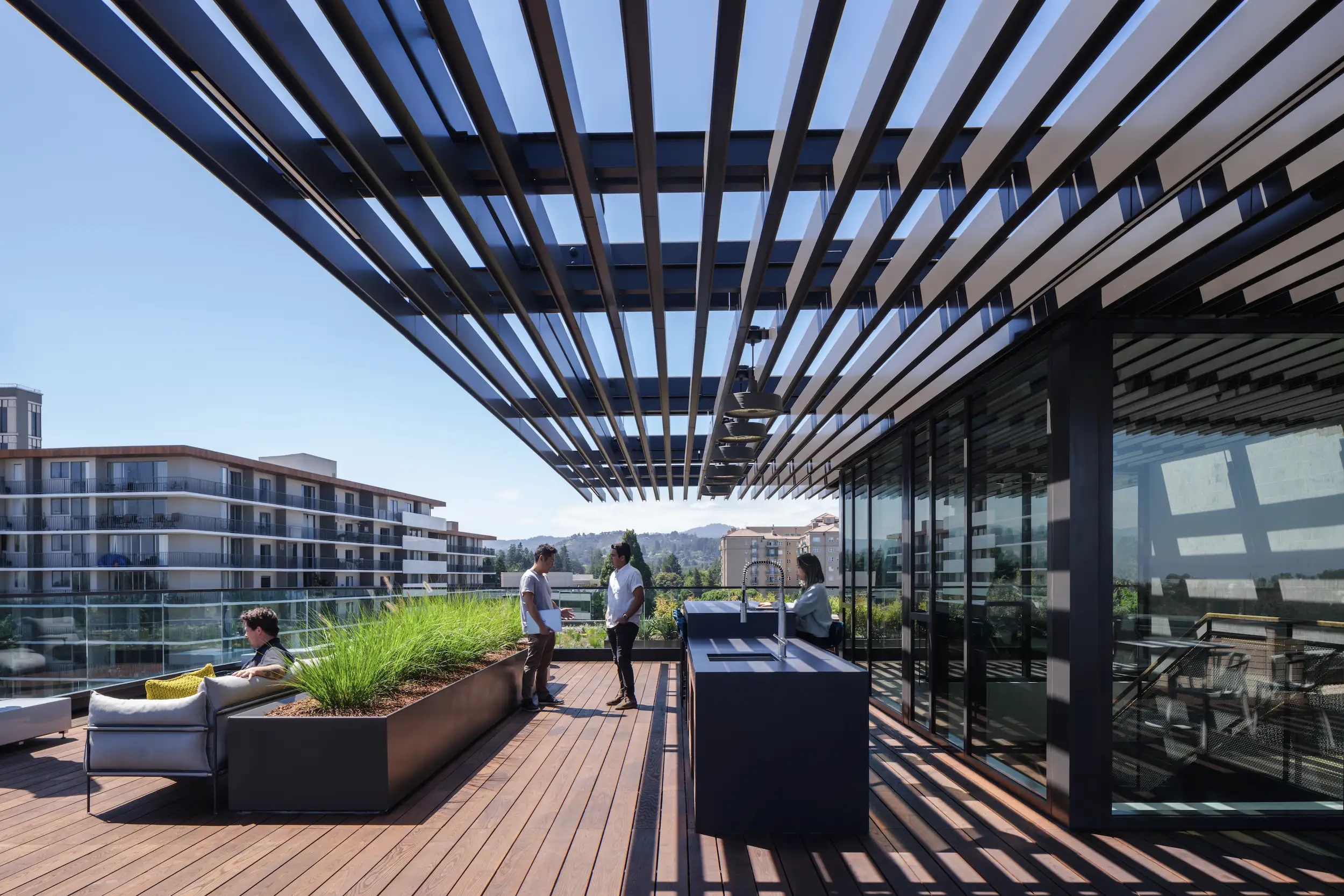
Brickline’s Rooftop deck. Photo © Jason O'Rear
Though the climate is temperate year-round, it is unusual for Northern Californian office buildings to have operable windows. Prometheus’ offices buck this trend, opting to let employees enjoy fresh air indoors. The building also incorporates two large private terraces and a rooftop deck for additional office social space, and a private terrace and courtyard for residents. “Many clients would not go as far as Prometheus did on this,” says Shiles. “This building does not look like a spec building; they had a real pride of placemaking.”
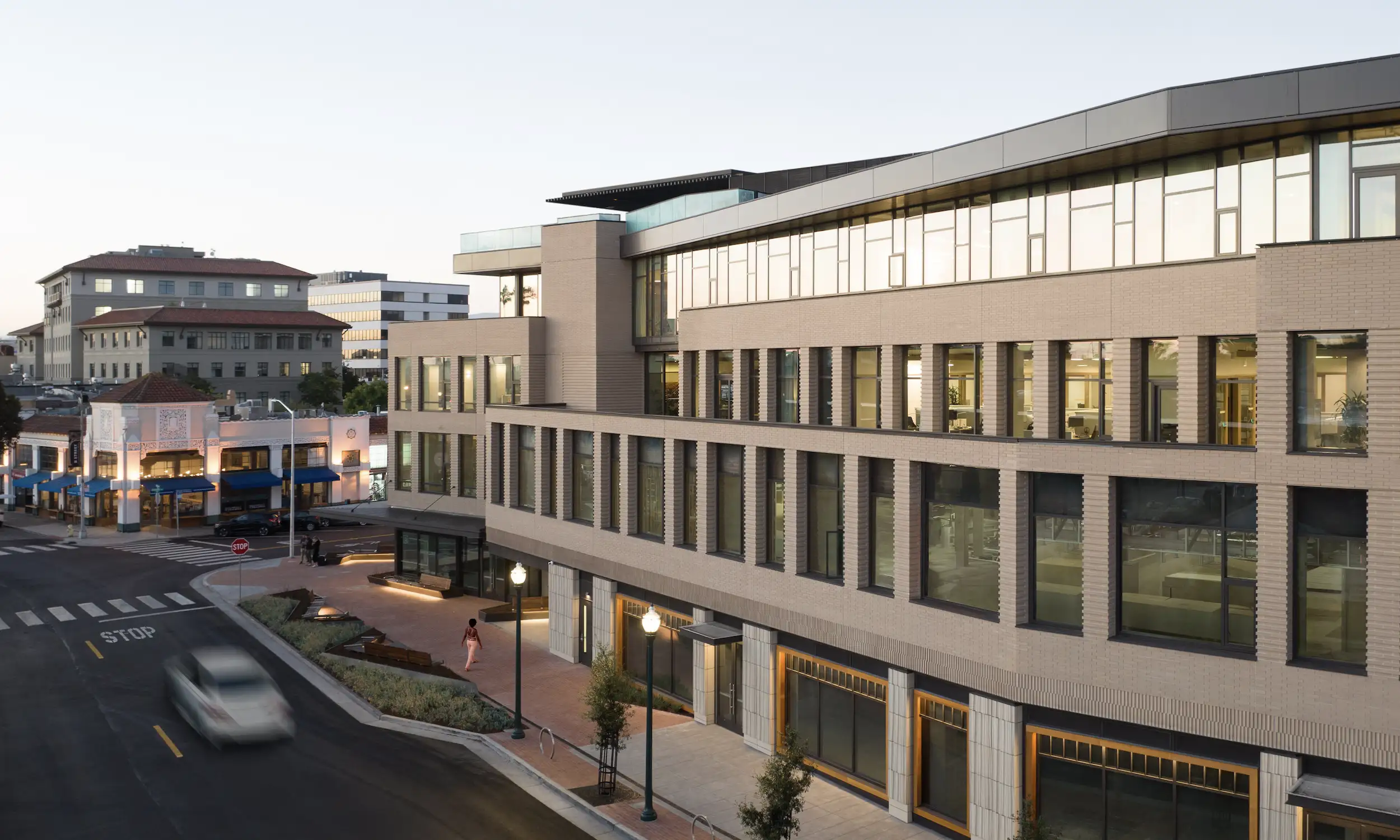
Ground-level retail storefronts connect the development to the surrounding streetscape. Photo © Jason O'Rear
The architects also note that the building’s ground-floor retail space is demised to accommodate small businesses that have proliferated in San Mateo, seeking to become part of the varied local framework rather than overwrite it. Adds Shiles: “You get the vibe of a village, but it’s metropolitan in that it’s chock-a-block with the best noodle house in the Bay Area, adjacent to a traditionally Latinx shopping street that could be plucked out of San Francisco’s Mission District; then across the street there’s a German brewhouse, and so forth.”
While so many of today’s apartments rely on the appeal—and code-compliant ease—of what many call “anytown architecture,” WRNS hopes that the Brickline will give San Mateans pride in their town as it continues to grow.


